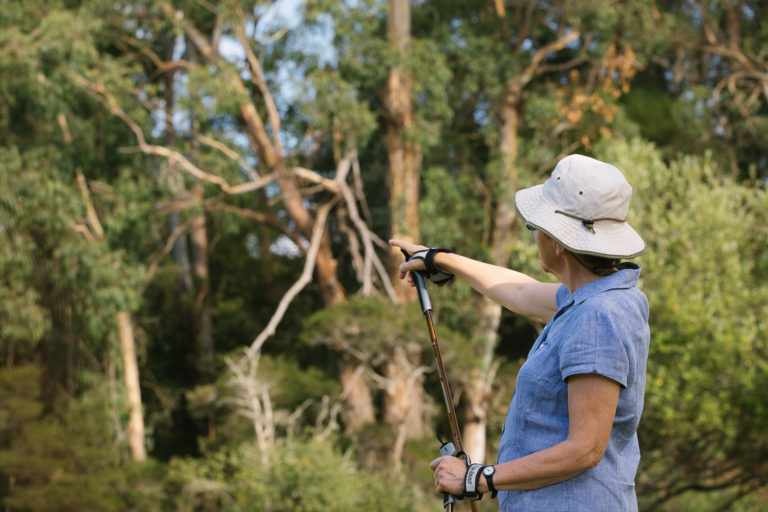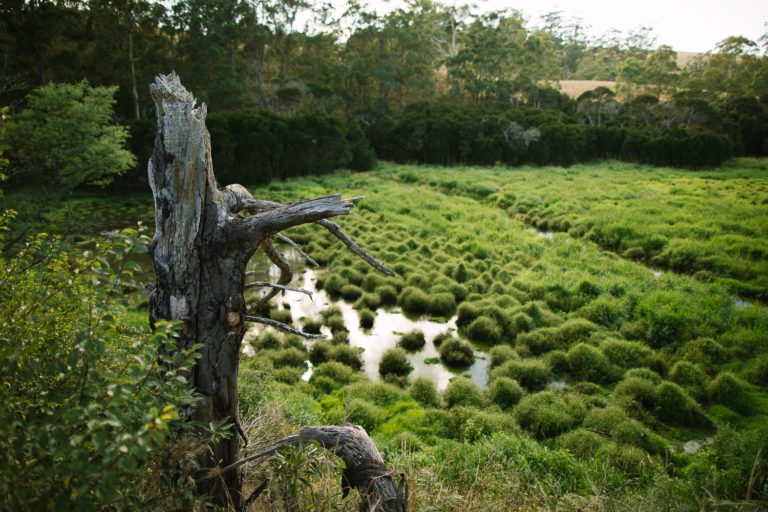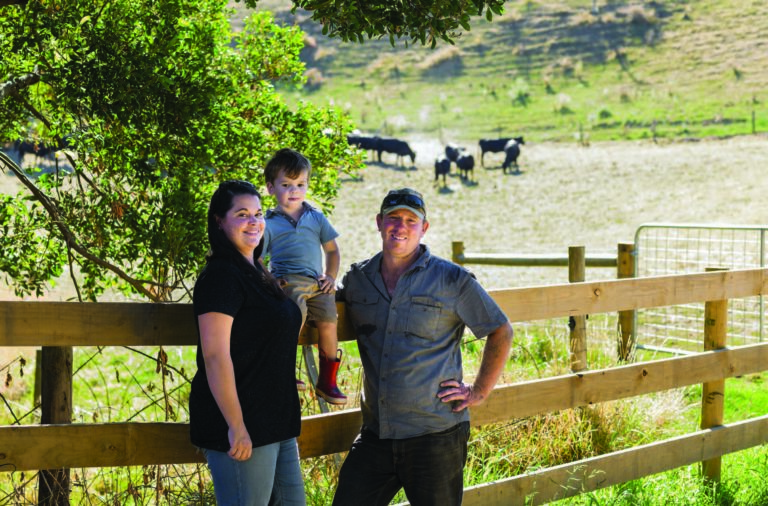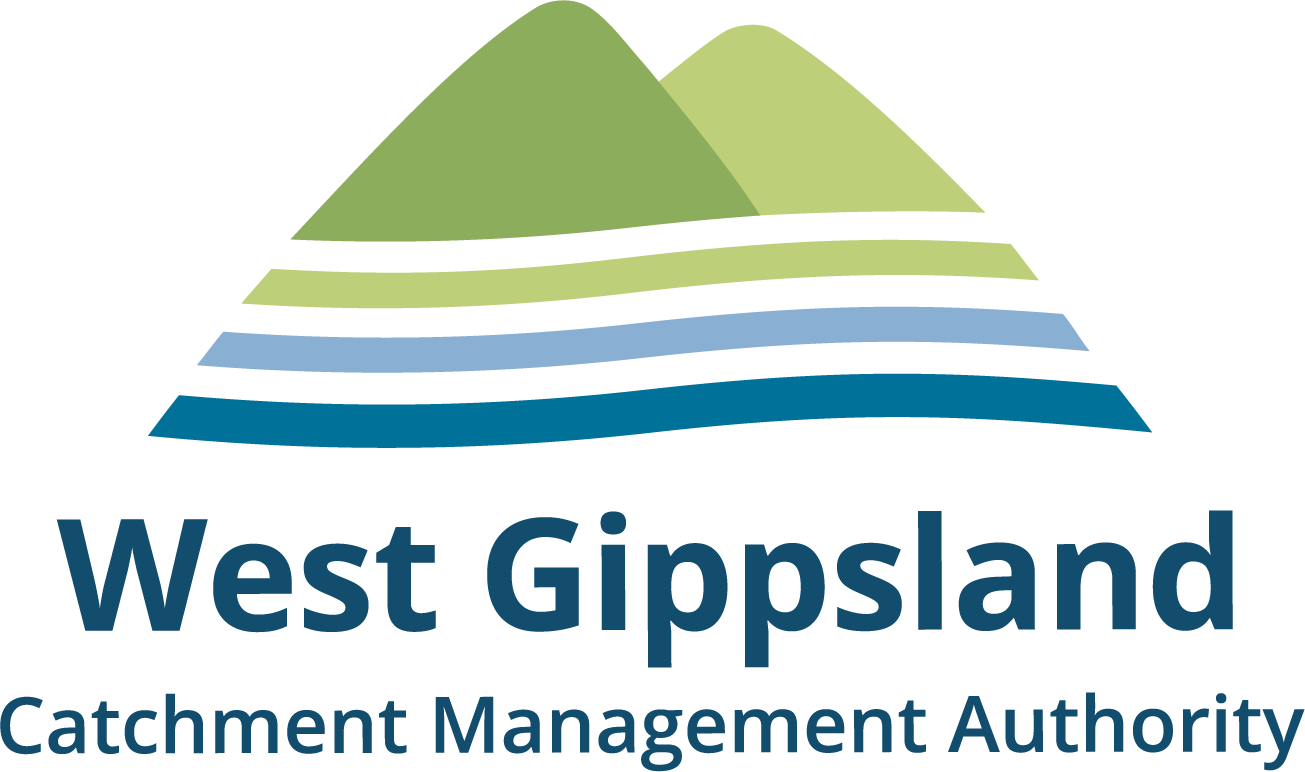Productive partnerships with community…
To work with a ‘whole of catchment’ approach it pays to think both big and small. Big, as catchments often are, and small because working on smaller projects within a single catchment or across catchments can bring big changes, both environmentally and culturally for a whole community.
Through Regional Riparian Action Plan funding over the last five years, the West Gippsland Catchment Management Authority’s relationship with Landcare has helped us work toward the goals we set to rehabilitate and protect our landscape and environment.
For Project Delivery Team Leader Matt Bowler, that close connection with Landcare is vital.
“We share a vision for effectively managing natural resources and helping farmers be more productive, efficient and environmentally friendly,” explained Matt. “It’s not always about developing major projects. Sometimes a small contribution from us can help Landcare get a project underway or it can complement other work we are doing.”
Downstream from the Agnes falls, the Agnes Gorge is a stunning section of river meandering toward Corner Inlet; and the old road provides a beautiful walk and perfect vantage point to view the river. The Agnes River Gorge Project aims to enhance a green corridor through a majestic but little-known Gippsland gem – the Agnes River Gorge.
Work on this project is driven by volunteers from the Agnes River Landcare Group.
“We’ve done a lot of work over the years on the Agnes River,” explains Matt. “It’s now at the stage we’re we would estimate that it’s about 70% complete. “The Agnes Gorge project really complements the work we’ve done, and we’ve loved supporting the Landcare group as part of this project.”
Agnes River Landcare Group member, Bryan Watterson, said he’s got great heart and hope after seeing the work of WGCMA. “I’m impressed with their willingness to work with landholders to recreate a healthy system,” said Bryan.
WGCMA support on this project has included donating trees, purchasing materials as well as attending planting days and conducting talks for school kids.
Matt says the Black Spur Wetland project is a good example of the multiple benefits of a strong connection with Landcare. “The area is a snapshot of what South Gippsland looked like before European settlement. But it was run down and in need of restoration.”
Local landholders and members of the Nerrena Landcare group agreed. They were keen to save the Strzelecki gums and the Swamp Paperbark and provide a habitat for native species including koalas and platypus and the Sword Grass Butterfly.
The small group of volunteers applied for funding to develop a plan for the future of the Wetland, incorporating the rail trail restoration and the proposed realignment of the South Gippsland Highway. The Plan took a twenty-year view to redeveloping the area. Improving water quality, weed control and restoring native vegetation and biodiversity were vital.
Nerrena Landcare group member, Kate Walsh, is excited to see the plan being embraced and endorsed by others. “The group developed the plan and vision, which we’ve been able to share with others.”

Matt said the CMA was happy to allocate money for weed control to help to get the project up and running because it also aligned with our priorities. “Landcare has driven this project and now it’s great to see the Major Roads Project Authority commit to revegetating a significant part of the area as part of their $50 million highway realignment project.”
Already the community is seeing the benefit of the united approach to this unique area. “At the moment, there are swans nesting in the wetlands and we have platypus swimming down the river,” said Kate. “When you walk along the rail trail you really appreciate the remnant vegetation.”

As well as playing a small role in what has blossomed into a major rehabilitation project, the CMA has also been able to contribute through our willow control program.
Adjacent to the Black Spur site, local landowners Melissa and Luke Biram were keen to start revegetating their land. But first, they needed to address the willow infestation on the banks of the Tarwin River. “Our staff have been working with Luke and Melissa to remove willows from around half a hectare of land,” said Matt. “The trees have been cut down, the stumps have been poisoned. Then, once the fire restrictions are lifted, those willow heaps will be burned.”
The area also includes a small wetland. Fencing along the river and around the wetland will help keep the stock out from these important waterways. “Once the willow removal and fencing is complete, then Luke and Melissa will work with Landcare on a revegetation project,” said Matt.
Willow control was also the basis for the WGCMA involvement with the Albert River Landcare Group’s Hiawatha Reserve project at Minnie Ha Ha Falls.
Scott Elliot from the Yarram Yarram Landcare Network said the location of the reserve is important, as it is at the headwaters of the Albert River. “It’s at the epicentre of our Jack and Albert River Restoration Project, which focuses on improving the health of the river from source to mouth,” explained Scott. “We’ve also been doing weed control, spraying, revegetation and fencing, in partnership with WGCMA, Hancock Victoria Plantations, the council and the local hall committee.”
The reserve is popular with visitors and campers which is threatening the health of the river and the remnant vegetation. “There has been renewed interest in the area from day trippers and for bushwalking, sight-seeing and fishing,” said Scott. “There were fantastic facilities in the past, but they had been removed, due to pressures of time, use and vandalism. “Landcare’s involvement to date has been to improve hiker access and we’re working with Wellington Shire Council to get further support to upgrade the facilities.”
He said members of the Albert River Landcare group had identified the need and continued to drive the project. “This is an excellent example of a community-led project getting some fantastic momentum and partner buy in,” said WGCMA’s Matt Bowler. “The work will improve the aesthetics and usability of the Hiawatha Reserve and protect the ecology of the area. “Our staff will carry out willow control works in the area. This links in with work that has already been completed upstream of the site, as part of our willow removal Headwaters program.”

Across in Ryanston, a partnership with the Bass Coast Landcare Network (BCLN) has helped restore a section of Archies Creek that runs through Brent and Amy Richardson’s property. “The Creek was quite overgrown with blackberry and other woody weeds,” explained Amy. “We’d like to see it restored, but we also lost a few calves – so it makes financial sense to fence it too.”
Dave Bateman from BCLN said funding for the project initially came through the Powlett Project Landcare Group who secured a state government grant. “This grant along with support from the Bass Coast Shire Council and the WGCMA has made this large-scale project achievable for Amy and Brent. “Without funding to support these big projects it’s simply too expensive for farmers to undertake such a large project.”
The partnership saw more than 1.5 kilometres of creek fenced on both sides, five hectares of weeds killed and removed, and more than 10,000 trees planted.
Rich Allen, WGCMA Project Coordinator, said supporting landowners to improve the environment around their creeks was a goal for the organisation. “For us, this was a perfect project,” explained Rich. “We had a motivated family keen and willing to get in and improve the creek, Landcare was involved and supported them and local students helped plant more than 10,000 trees.”
WGCMA and Bass Coast Landcare Network teamed up with Bass Coast Shire Council at a site in West Creek, on the property of Brad and Dani Carr.
A 4.63 ha site of Swampy Riparian Woodland was fenced off and revegetated with 14,000 plants.
For Dani Carr, the project was a chance to bring biodiversity back to the area. “I come from a conservation background and when I came to the farm, I noticed there were not many trees on it.”
Other issues included soil erosion and poor water quality in their creek and damage to the remaining trees by their cattle “The area contains depleted remnant vegetation and an ephemeral creek running through it, which eventually feeds into the Powlett River,” explains Dave Bateman, NRM Coordinator for the Bass Coast Landcare Network. “The site has blackberry and ragwort issues that we tackled before the revegetation.”
WGCMA contributed three kilometres of fencing and some funding towards weed control by the Landcare team. Dani is passionate about improving the environment on the property and said that without help from Landcare and WGCMA, it would have taken them a lot longer to achieve the results. She describes the transformation as incredible. “Since the planting, the bird life has been returning and water has flowed down the creek,” she said. “The creek is dry over summer, but now it stays wetter for longer. Water is pooling and not evaporating … and the frogs are back! “It looks amazing and it’s better for the cattle as well. They get shelter and we’re supporting native flora and fauna.”
Bass Coast Shire Council’s Biolinks program contributed funding towards the plants and the two large-scale school group planting days. “This is a large-scale revegetation project made possible through a partnership approach,” said CMA project officer, Rich Allen. “Landcare plays the crucial role of engaging the landholders in the first place, followed by engaging the local schools. Landcare volunteers get the plants in the ground and the Landcare works crew do the weed control and site preparation, which makes the revegetation process much easier for the landholder and guarantees a better result. Providing fencing and working with Landcare to support them on the project has helped deliver a big result in terms of protecting remnant vegetation.”



